Water Soluble Graphite Drawings Female Full Body
H2o soluble graphite pencils tin turn into paint every bit if past magic — just add water. Picket the excitement unfold with this water-inspired demo for drawing waves.
By Sherry Camhy
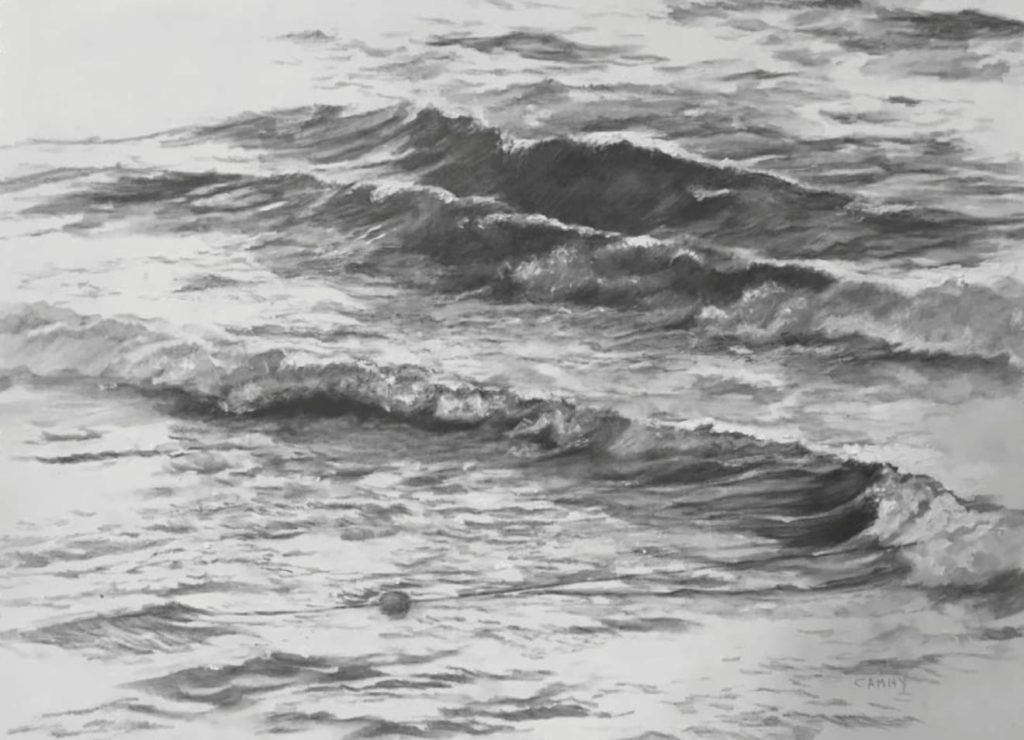
The Magic of Water Soluble Graphite
Nosotros are living in an historic period of wondrous new fine art materials. When I buy my supplies these days I feel like a kid in a candy shop. 1 new fabric of great involvement to draftsmen is water soluble graphite. The Former Masters were amazed at the invention of graphite pencils. Imagine how thrilled they would have been with pencils that tin plow into pigment as if by magic.
H2o soluble graphite is bachelor in degrees ranging from HB to 8B. It is sold in pencils, likewise every bit in stick, pan, and liquid course. The pencils piece of work beautifully with or without water. When dry, they feel velvety smooth every bit they glide over paper. They brand deep rich darks, and they are erasable like normal pencils. Merely add a drib of h2o and the graphite turns inky black and can be applied and manipulated with a brush.
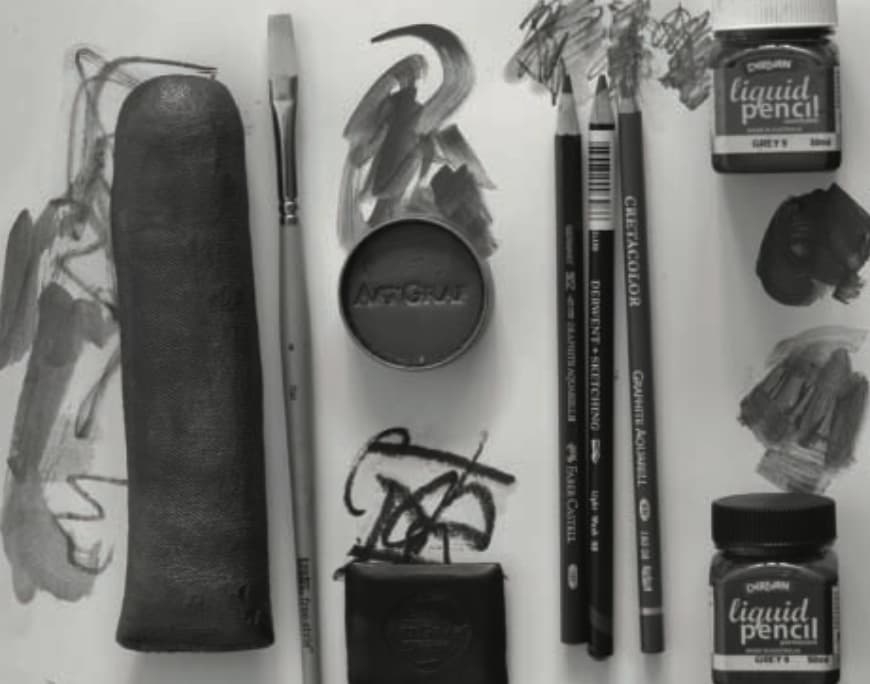
Mixed-Media Applications
I find the concept of combining and experimenting with materials impossible to resist, and water soluble graphite lends itself to many mixed-media applications. It tin exist used with ordinary pencils and other forms of graphite and as well with watermedia paints, colored pencils, crayons and acrylic inks, among other media. A particularly interesting possibility is to utilise h2o soluble graphite in tandem with pastel for a very painterly drawing approach — just that's a topic for another article.
The possibilities offered by h2o soluble graphite are multitude, but you'll desire to carefully consider how and when to utilize it. It may at offset seem similar the perfect medium for artists who desire to motility from drawing to painting. When I offset tried it, my instinct was to complete a carefully rendered drawing in the traditional fashion, and so add water, option upwards a castor and start painting. And I'm sorry to report: That'south what I did.
Cull Your Paper Carefully
I spent a long time working on a drawing, and I was proud of the result. And then, with high hopes and not bad expectations, I began to brush water onto the drawing. But with each brushstroke, parts of the cartoon started to roll similar teardrops down the folio. I was working on a vertical easel on a very slick piece of paper. Disaster! Luckily I had at least taken a movie of my drawing before I ruined information technology.
The lesson I learned was that when something looks too piece of cake to be truthful, information technology probably is. Another, more concrete lesson: Cull your paper advisedly. If it is too absorbent, likewise much liquid volition get sucked into it and when
you try to rework an area the paper will plow to mush or pill like an old sweater. If the surface is too slick and smooth, liquid tin puddle or run down the folio.
Having learned these lessons, I chose a medium-texture illustration board for my drawing Making Waves, featured in the post-obit demonstration. I also chose a subject that did not require the kind of control that others might, assuasive me to play with my new medium with a sense of freedom.
Drawing Demo: Making Waves
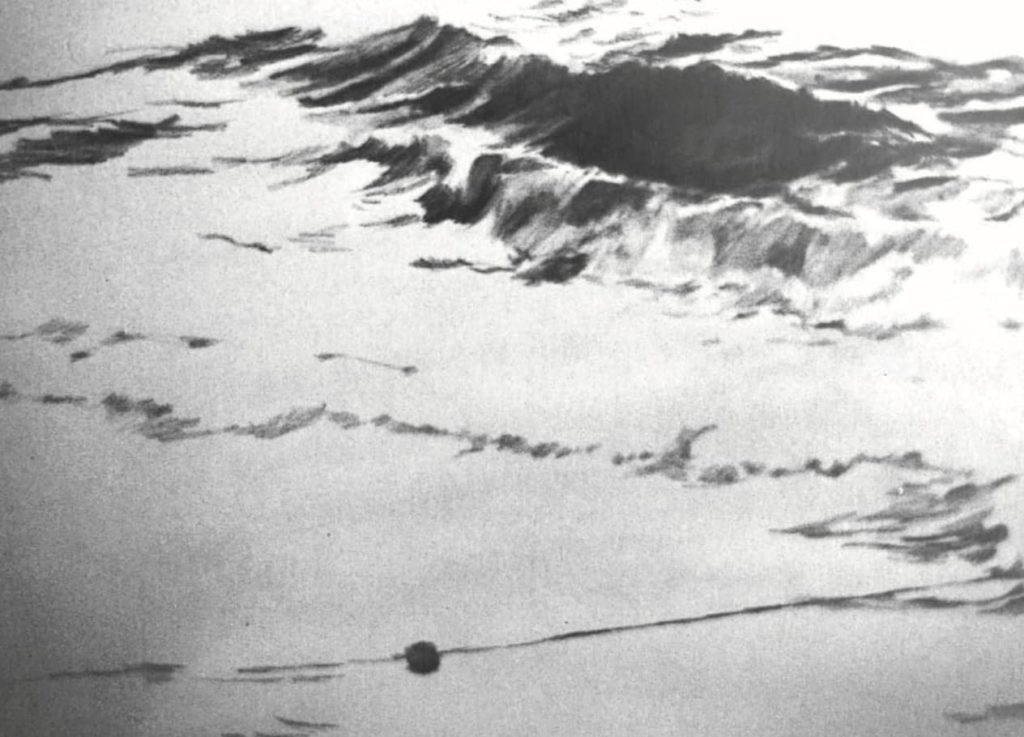
Step 1
I began this drawing using a dry 4B water soluble pencil from Faber-Castell, working on a medium-texture analogy board. I first placed the large cresting wave — the image'southward most important compositional element — in the upper-correct corner. I pressed hard enough on the dry pencil to assure that the wave would exist the darkest aspect of the drawing. I drew the modest buoy about as dark and clearly indicated its line, which I wanted to act as a counterbalance to the diagonal movement of the water.
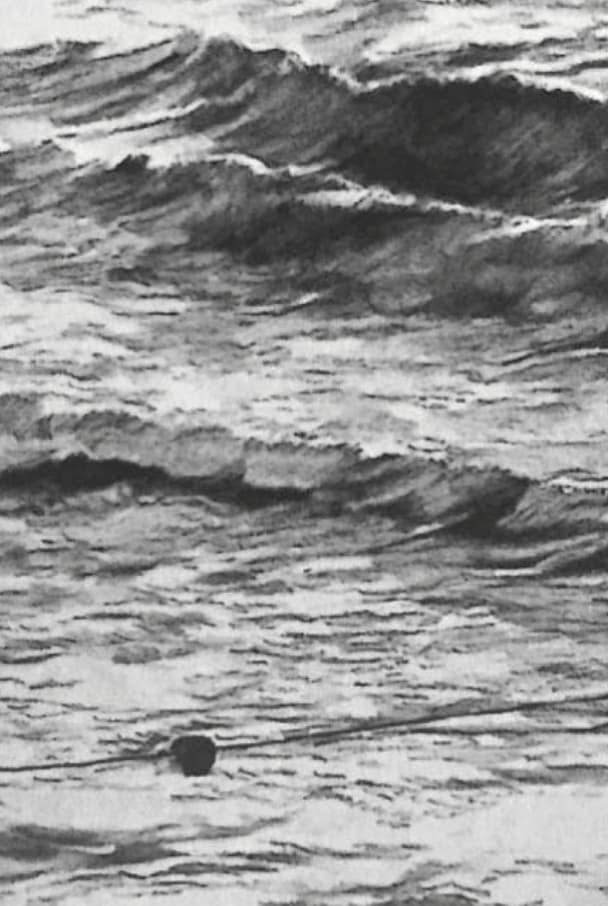
Step 2
I added more details and strengthened darks. Every bit I did and so, I softened the dry pencil lines using a brush that was just slightly clammy.
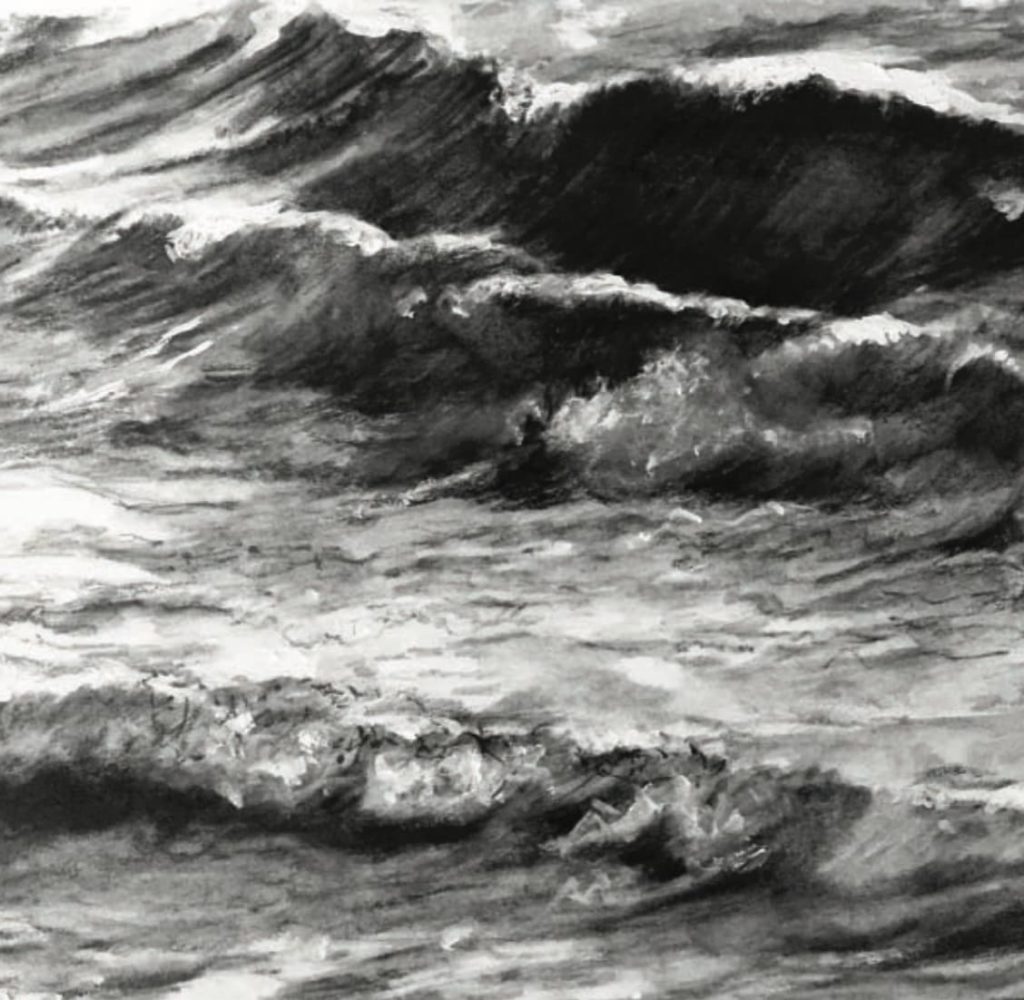
Step three
When my surface was completely dry, I added more crisp lines and a few little dot-like ones to convey the sunlight bouncing off the body of water'south surface. I achieved the darker dots past dipping the very tip of the pencil point into water to brand the graphite indicate softer and a little sticky. The marks ranged betwixt thick and sparse, nighttime and calorie-free, flat and raised. Using a water soluble white pencil in the same way, I added some little lights.

Step 4
I used my 4B pencil to make several mixtures of liquid graphite (run into the tip below), which I could so apply with watercolor brushes. I added the last dark accents with an 8B pencil over wet washes. This method of layering moisture and dry water soluble pencils builds rich blacks. For the terminal highlights, I added small dabs of thick white gouache. These summit-airplane ledges catch the downward glow of the picture lights aimed at the image when it'due south hung on the gallery wall.
A Tip for Using H2o Soluble Graphite
Although water soluble graphite is sold in a range of values, once the graphite is moisture the values are not easy to control. You lot can regain some of that command by making your ain solutions of liquid graphite. Starting time, shape various pencils on a sandpaper cake. Collect the resulting graphite granules, and mix them with different amounts of h2o in little containers. Y'all'll then accept several liquid-graphite mixtures, each with a distinct, consistent value.
You may as well like:
- Graphite Pencil Cartoon Basics 101
- Cartoon: What Kind of Paper Should Yous Use?
Source: https://www.artistsnetwork.com/art-mediums/drawing/making-waves-in-water-soluble-graphite-a-demo/
0 Response to "Water Soluble Graphite Drawings Female Full Body"
Post a Comment